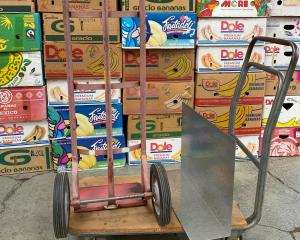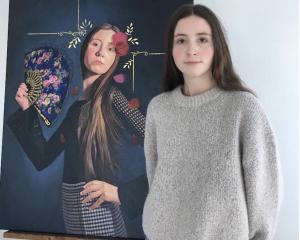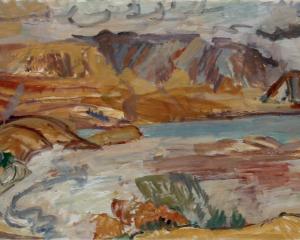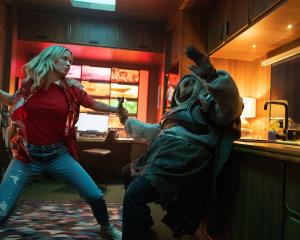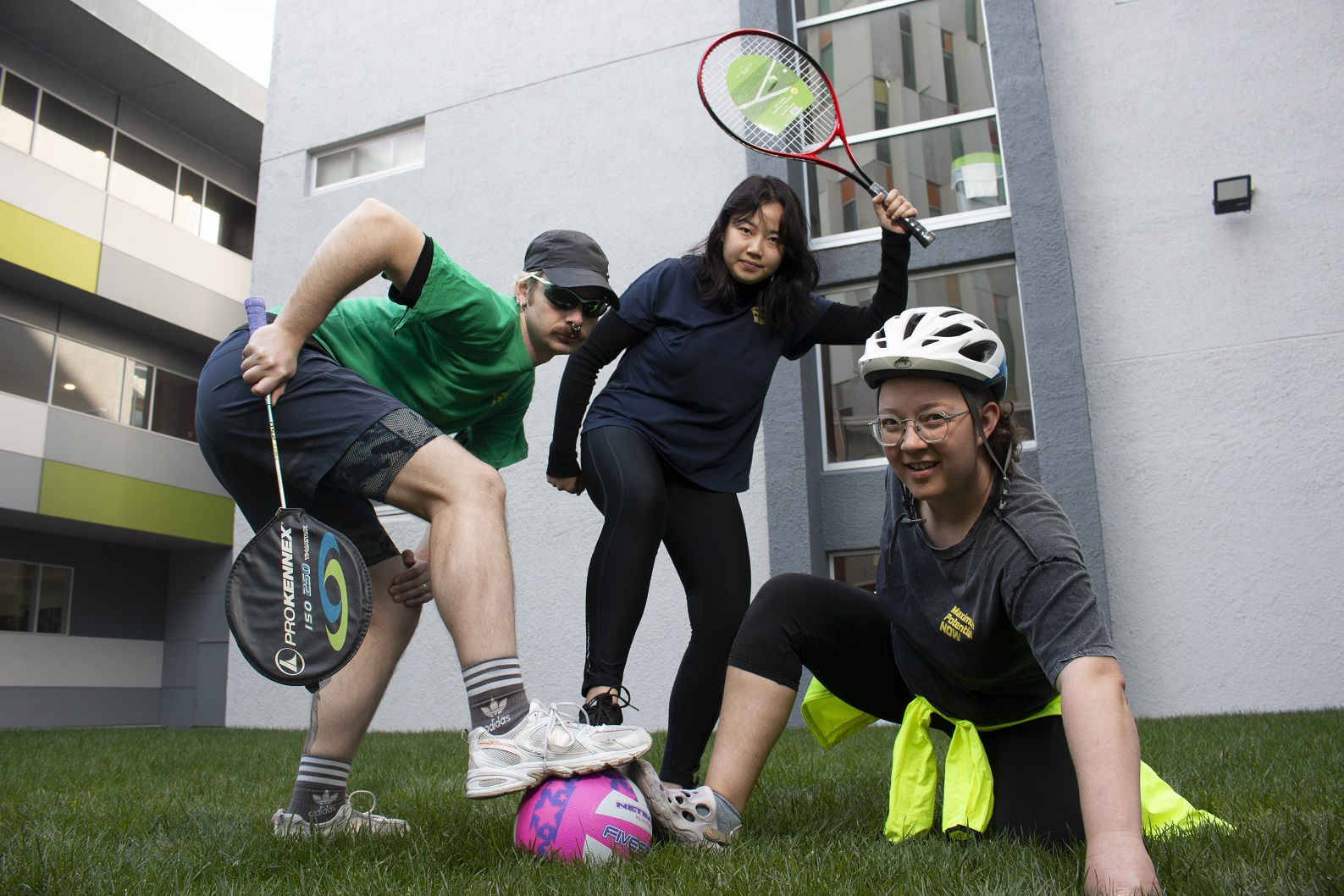
(Blue Oyster Art Project Space)
"Maximum Potential NOW" is a bright and humorous critical reflection on experienced realities of consumer capitalism in daily life. Citing Jia Tolentino’s essay "Always Be Optimising" (2019), Cheng, Joils and Sutherland work across performance, painting and sculpture, and play with the aesthetics of self-help and wellness marketing. Utilising irony, a shared concern of these artists is the binary idea of success or failure that comes with the pressure of an idealised pursuit of progress and efficiency.
Cheng’s comedic digital video work, Shiny from every angle (2024), is a looping series of exercise routines with an upbeat stock soundtrack. However, the vaguely clumsy protagonist, in black athleticwear leggings and sported logo, struggles to keep balanced or just isn’t quite able to complete a bridge pose, for example.
Joils’ contribution is a series of paintings, including an energetic wall-length work with the slogan "WE CAN MANUFACTURE DESIRES" against an exploding cloud of stars and celebratory gestures. On the opposite wall, Joils plays with the idiom of a "blank sheet of paper" as "the chance to create something original".
Sutherland’s works are found object and interactive sculptural pieces. On a work titled Thrive Optima 2.0 (2024) are bright red buttons that, when pressed, a deep disembodied voice speaks from on high: "Achieve your dreams!" or "It’s written in the stars!" and so on.
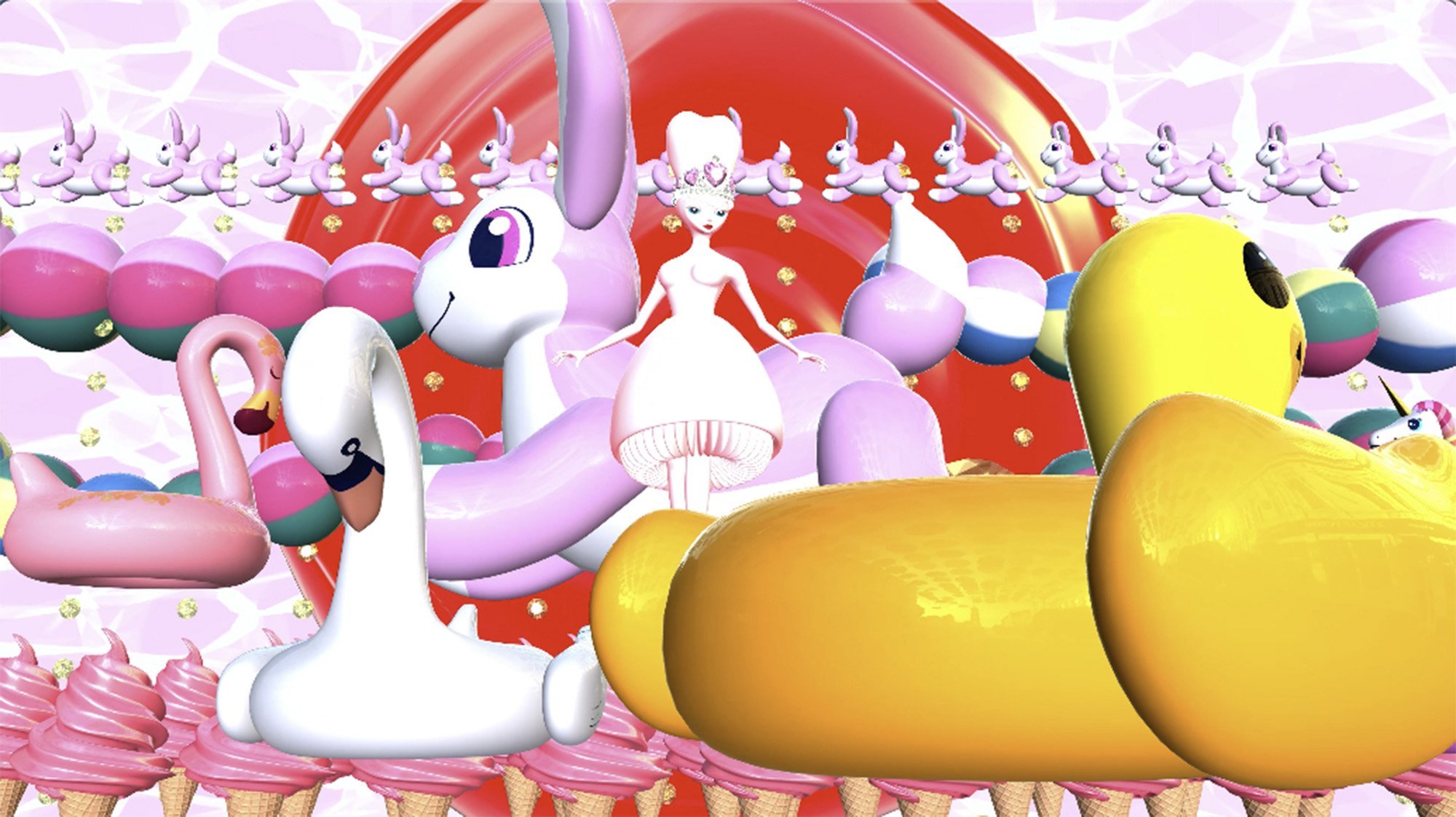
(A Rear Window Project, Dunedin Public Art Gallery)
Described aptly as a dreamscape in the exhibition text, this 3-D animation invites the viewer into a world of spinning ice-cream cones, floating inflatable animals, sparking jewels and a metamorphosing rose: the central figure, TOKI.
TOKI is a long-standing character in Hye Rim Lee’s practice. Developed in 2001 and showcased in Lee’s final year of art school, TOKI has become central to the artist’s concerns with topics such as cyber feminism and identity, for example. TOKI (Korean for rabbit) has a human form and face, with bunny ears and mushroom-shaped attire.
In White Rose (2022), this character perpetually twirls through an environment of moving elements. TOKI both activates and interacts with the visual motifs of the work, generating new objects, or activating changes in colour or form. Ultimately, we see TOKI transform into a rose, sprouting buds and thorns. The sequence of imagery concludes and begins with central gold jewel and light reflection, it seems, at the bottom of a sun-lit pool.
White Rose (2022) comes after Lee’s Black Rose Series (2014-21) that dealt with a theme of personal loss and grief. In contrast, or in response, this work is a transformative jumble of delight — a bright and shiny pink, red, white and yellow spectacle.
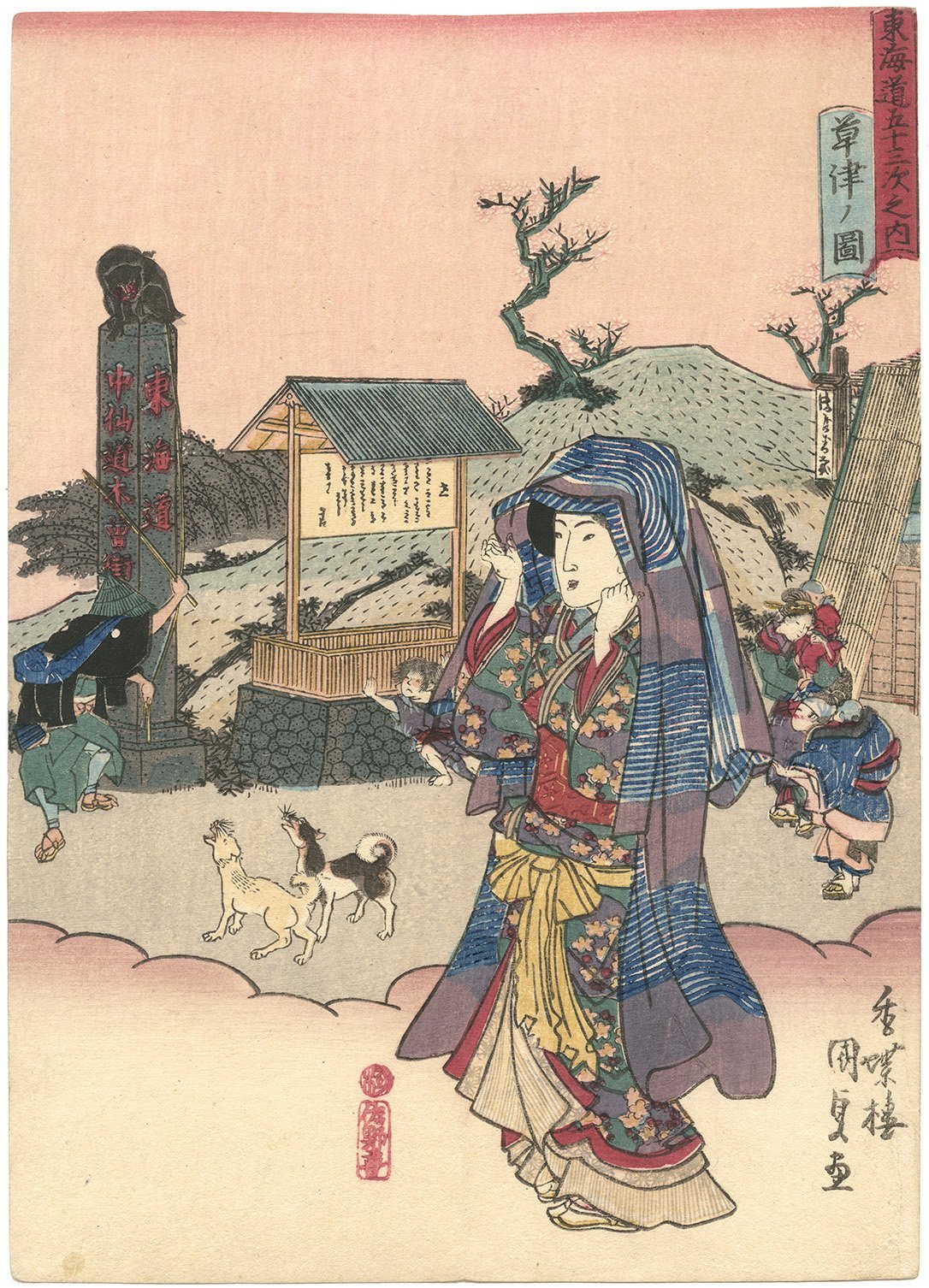
(Brett McDowell Gallery)
This year’s ukiyo-e exhibition at Brett McDowell Gallery is a selection of curious and accomplished works, while being somewhat thematically unrelated. However, for the first-time viewer, the exhibition provides an opportunity to learn something about this Japanese art form, specifically the ukiyo-e of the late Edo period in the 19th century.
On show are prints by the following well-known figures: Kunisada (1786-1865) and Kunisada II (1823-80), a pupil of Kunisada; Kuniyoshi (1798-1861), a fellow student of Kunisada; Chikanobu (1838-1912), who studied with both Kuniyoshi and Kunisada; and Eisen (1790-1848), who was also a noted influence for Chikanobu. Alongside prints by these names are two unknown artists, including a jewel-like "dancing beauty" on violet creped wrapping paper.
Common or related genres are represented: a kabuki theatre district, beautiful women, and travel scenes and landscapes. Six prints from Kunisada’s famous rendition of The Fifty-Three Stations of the Tōkaidō, originally by Utagawa Hiroshige (1797-1858), are present. In these works, Kunisada has placed the figure of a "beautiful woman" in the foreground of versions of each of Hiroshige’s originally designed stations (commonly, landscapes) along Tōkaidō Rd, a main arterial route in Japan. In their detail, these works all invite inspection and inquisitiveness — Kunisada’s addition of two little barking dogs to station 53, for example.
By Joanna Osborne


